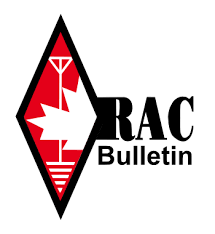RAC Ontario Sections Bulletin for February 18, 2023
Official Bulletin Station for Radio Amateurs of Canada with this week’s bulletin.
NATIONAL/INTERNATIONAL NEWS
1. Changes to the RAC Email Alias/Forwarding System
As previously reported, in January many RAC members whose email addresses used the format
“[email protected]” experienced problems sending and receiving emails.
Thankfully, our IT volunteers were able to resolve the issue, but we had to make significant changes
to the system to be compatible with internet, web hosting and cloud service providers in order to
prevent future outages.
The result is that we need to be able to separate the email addresses of RAC officials, staff and
volunteers from those of our members. In order to achieve this:
RAC members will switch to “[email protected]”
RAC officials and volunteers (“corporate users”) will use “[email protected]”
Both the “[email protected]” and the “[email protected]” email addresses will work simultaneously
until Sunday, May 15 to give RAC members time to update their user information on any websites
and subscriptions.
We understand that this is a big change and it is definitely not one we take lightly, but it is a necessary
step to ensure that we continue the important work in support of Amateur Radio in Canada and
internationally. We appreciate your understanding and continued support.
A Q&A which provides more information on the reasons for this change can be found on our website
at: https://www.rac.ca/cybersecurity/
— RAC website.
2. 1×1 Special Contest Callsign List (UK) Expanded
The holder of a UK Amateur Radio Full Licence or Full (Club) Licence may apply for a Special
Contest Call sign (“SCC”). This call sign may only be used in amateur radio contests of no more than
48 hours duration, run with the aim of contacting as many other stations as possible in a given period
of time and run by an amateur radio club, national or international amateur radio association or another
organisation (including amateur radio publications), generally accepted within the amateur radio hobby
(locally, nationally or internationally) as being a bona fide contest organiser.
The call sign will be in the format ‘G’ or ‘M’, followed by a chosen digit and a chosen suffix letter.
Examples are G8Z or M7R. We have made 520 call signs available, (G)(#)(&)(A-Z) and (M)(#)(&)(A-Z),
where ‘#’ is an applicable Regional Secondary Locator (if any) and ‘&’ is a digit from 0 to 9.
The RSGB publishes a list (http://www.rsgbcc.org/hf/information/scc.shtml) of SCCs, which is a guide
to availability. Applications take up to four weeks to be processed.
Full details of how to apply for a Special Contest Callsign, including the complete qualifying criteria,
can be found on the RSGB website.
— RSGB website
ONTARIO SECTION NEWS
ITEMS OF INTEREST
3. The US Airforce may have shot down an Amateur Radio “Pico Balloon” over Canada
Since the famous takedown of a suspected Chinese spy balloon, US jets have shot down a total of
three more unidentified balloon objects, now confirmed to have been ‘commercial or benign’. There
is speculation that at least one these three objects may have been an amateur radio ‘pico’ balloon.
One part of the amateur radio hobby is launching high altitude balloons with various radio and other
payloads. Larger amateur radio balloons launched in the USA require FAA clearance, need a radar
reflector attached, and usually continually transmit APRS telemetry before naturally popping and falling
back to earth after a few hours, just like a weather balloon.
However there is also the simpler ‘pico’ ballooning hobby, which involves the use of mylar helium party
balloons to launch small solar powered payloads that are only a few grams in weight. They typically
transmit low power WSPR at HF frequencies and can only transmit whenever there is sufficient solar
power available. Amateur radio or SDR hobbyist stations around the world can pick up these
transmissions, and report them on amateur.sondehub.org and/or wsprnet.org. Well built balloons can
totally circumnavigate the globe several times over several months before degrading.
Read more – RTL-SDR Blog: http://bit.ly/3xAeGMl
— This week in Amateur Radio
4. Special Theme for World Amateur Radio Day 2023 Announced
The International Amateur Radio Union announces that Human Security for All, HS4A, will be the theme
of World Amateur Radio Day on 18 April 2023. For the first time, the United Nations Trust Fund
for Human Security and the World Academy of Art and Science are partnering with IARU in a
campaign to highlight the role that amateur radio plays in addressing the world’s most pressing needs.
Human Security measures security at the individual level. First introduced by the U.N. in 1994, the
concept identifies seven interrelated dimensions of security that are essential to an individual’s wellbeing:
economic, food, health, environmental, personal, community and political.
The partners believe Amateur Radio is uniquely positioned to address people-centered, context-specific
security challenges by promoting technical knowledge, practical skills, innovative technology, and the
deployment of backup systems at the community level that can be called upon in times of emergency.
The pandemic, climate change, natural disasters, and armed conflicts on several continents undermine
our security and respect no boundaries. Amateur Radio has repeatedly demonstrated its ability to address
human security needs. It is a truly global communications medium comprising some three million radio
enthusiasts connecting communities and the peoples of the world.
In celebration of World Amateur Radio Day, IARU and its member-societies will be conducting a special
two-week on-the-air event 11–25 April. Special event stations will be operating from around the world,
making two-way radio contacts to call attention to the HS4A campaign.
— IARU.org website
This concludes this week’s bulletin.
Bulletin sent from Official Bulletin Manager VA3PC
RAC Ontario Sections Bulletin for February 18, 2023

